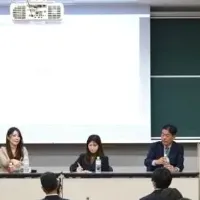
CardinalOps Reveals Critical Gaps in SIEM Detection Capabilities
CardinalOps' 5th Annual Report on SIEM Detection
In an era where cyber threats multiply at an unprecedented rate, understanding the effectiveness of security information and event management (SIEM) systems is paramount for enterprises. CardinalOps, a leader in unified threat exposure management, has released its Fifth Annual Report on the State of SIEM Detection Risk, revealing significant shortcomings that practitioners must address. This comprehensive study gathers insights from nearly 2.5 million log sources and scrutinizes 13,000 unique detection rules across various SIEM platforms, such as Splunk, Microsoft Sentinel, and IBM QRadar.
Key Findings
Low Coverage of MITRE ATTCK Techniques
Despite incremental progress, CardinalOps’ report presents an unsettling reality: enterprise SIEMs collectively cover only 21% of the adversarial techniques outlined in the MITRE ATTCK framework. This number represents a rise of just 2% from the previous year, leaving a staggering 79% of potential threats unguarded. In the increasingly hostile cyber landscape, such vulnerabilities can lead to catastrophic breaches.
Non-Functional Detection Rules
Alarmingly, around 13% of the existing SIEM detection rules are non-operational, primarily due to misconfigured data sources and missing log fields. Although there's been a reduction in broken rules compared to the previous year, these lingering problems underscore the dangers of inactive rules that may cause organizations to overlook active threats. With malicious actors continuously honing their methods, non-functional rules can spell disaster.
Underutilization of Data
Today's SIEMs are tasked with processing immense volumes of data, averaging 259 log types and nearly 24,000 unique log sources per organization. Despite having sufficient telemetry to detect over 90% of MITRE ATTCK techniques—an increase from 2024—organizations often struggle with manual and error-prone detection engineering practices. This underutilization of data creates a paradox where businesses possess the resources to combat threats but lack the operational capability to do so effectively.
The Challenge of Scalable Detection Engineering
Even with vast amounts of available data and advanced detection infrastructures, enterprises frequently fall behind in adapting to evolving threats. Resource constraints and inadequate automation in rule development and validation hinder the establishment of comprehensive and scalable detection engineering practices. The report reveals a disconnect between available resources and the ability to leverage them effectively against emerging threats.
The Path Forward
Michael Mumcuoglu, CEO and Co-Founder of CardinalOps, emphasizes the urgent need for organizations to re-imagine their approach to detection engineering. "Five years worth of data tells a stark story – organizations are sitting on a mountain of data but still lack the visibility needed to detect the threats that matter most. What's clear is that the traditional approach to detection engineering is broken."
To transform SIEM capabilities, enterprises need to embrace automation, artificial intelligence, and continuous assessment of their detection health. CardinalOps' report serves as a vital resource for Security Operations Center (SOC) leaders, Chief Information Security Officers (CISOs), and detection engineers, presenting best practices and actionable guidance for enhancing their detection strategies.
Upcoming Events and Resources
In addition to releasing the report, CardinalOps is offering a webinar titled "Bird's Eye View" on June 17th. This interactive session will dive deeper into the findings and provide practical steps to fortify SIEM detection methodologies. Featuring industry experts like Dr. Anton Chuvakin, Senior Security Advisor to Google Cloud, attendees will gain valuable insights into optimizing their security postures.
For a comprehensive exploration of the report and to register for the upcoming workshop, visit CardinalOps' website and sign up for the webinar.
Conclusion
As cyber threats evolve and become more sophisticated, the necessity for effective SIEM solutions has become more critical than ever. CardinalOps’ findings serve as a clarion call for organizations to reassess their detection capabilities, ensuring they are equipped to handle the complexities of modern cyber threats head-on. By prioritizing effective detection engineering and leveraging cutting-edge technologies, businesses can significantly reduce their risk exposure and enhance their overall security posture.
Topics Other)










【About Using Articles】
You can freely use the title and article content by linking to the page where the article is posted.
※ Images cannot be used.
【About Links】
Links are free to use.